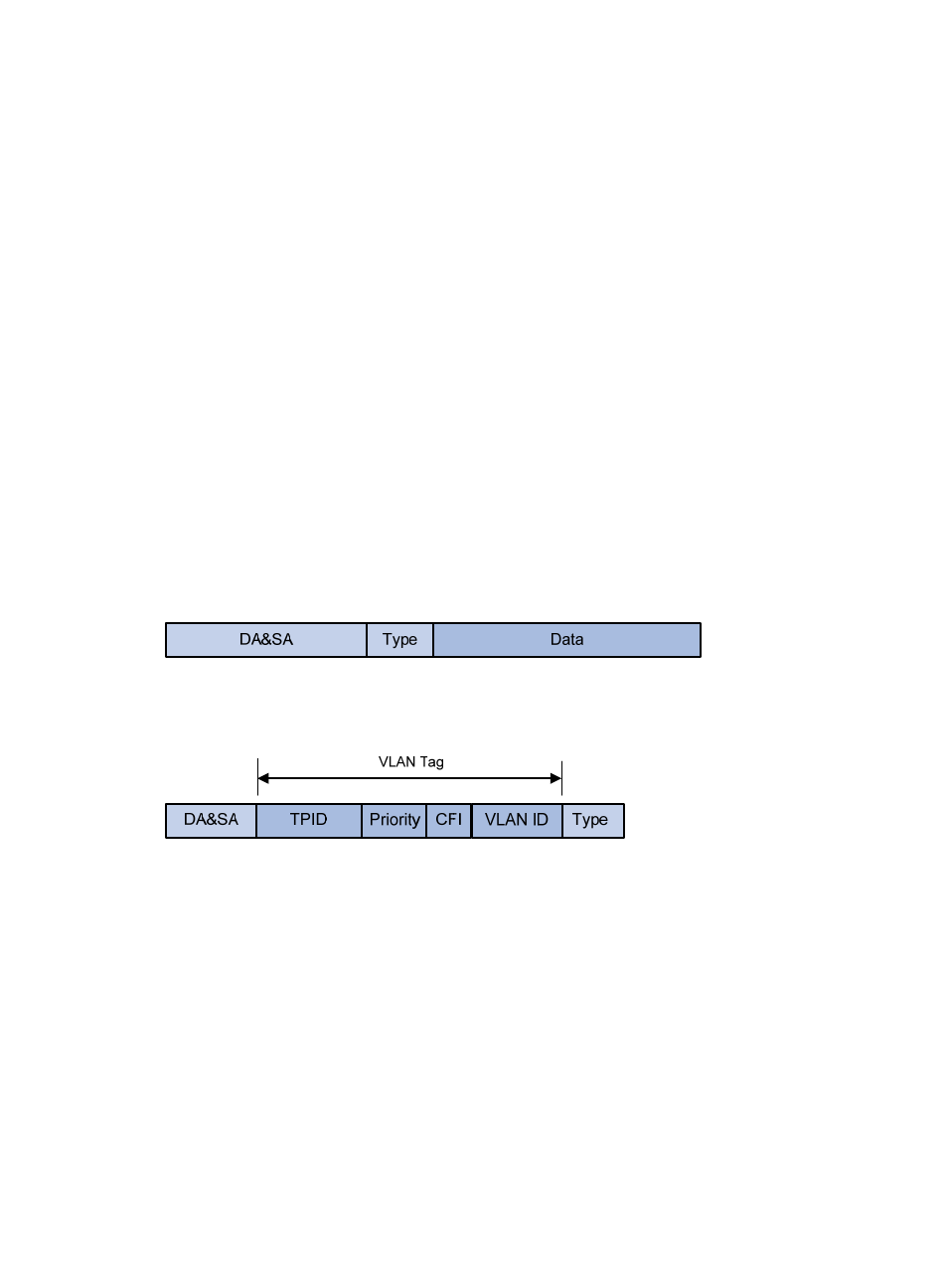Vlan fundamentals – H3C Technologies H3C WX3000E Series Wireless Switches User Manual
Page 94

85
A VLAN is logically divided on an organizational basis rather than on a physical basis. For example, all
workstations and servers used by a particular workgroup can be assigned to the same VLAN, regardless
of their physical locations.
VLAN technology delivers the following benefits:
1.
Confining broadcast traffic within individual VLANs. This reduces bandwidth waste and improves
network performance.
2.
Improving LAN security. By assigning user groups to different VLANs, you can isolate them at
Layer 2. To enable communication between VLANs, routers or Layer 3 switches are required.
3.
Flexible virtual workgroup creation. As users from the same workgroup can be assigned to the
same VLAN regardless of their physical locations, network construction and maintenance is much
easier and more flexible.
VLAN fundamentals
To enable a network device to identify frames of different VLANs, a VLAN tag field is inserted into the
data link layer encapsulation.
The format of VLAN-tagged frames is defined in IEEE 802.1Q issued by the Institute of Electrical and
Electronics Engineers (IEEE) in 1999.
In the header of a traditional Ethernet data frame, the field after the destination MAC address and the
source MAC address is the Type field indicating the upper layer protocol type, as shown in
.
Figure 25 Traditional Ethernet frame format
IEEE 802.1Q inserts a four-byte VLAN tag after the DA&SA field, as shown in
.
Figure 26 Position and format of VLAN tag
A VLAN tag comprises the following fields: tag protocol identifier (TPID), priority, canonical format
indicator (CFI), and VLAN ID.
•
The 16-bit TPID field with a value of 0x8100 indicates that the frame is VLAN-tagged.
•
The 3-bit priority field indicates the 802.1p priority of the frame.
•
The 1-bit CFI field specifies whether the MAC addresses are encapsulated in the standard format
when packets are transmitted across different media. A value of 0 indicates that MAC addresses
are encapsulated in the standard format; a value of 1 indicates that MAC addresses are
encapsulated in a non-standard format. The value of the field is 0 by default.
•
The 12-bit VLAN ID field identifies the VLAN the frame belongs to. The VLAN ID range is 0 to 4095.
As 0 and 4095 are reserved, a VLAN ID actually ranges from 1 to 4094.
A network device handles an incoming frame depending on whether the frame is VLAN tagged and the
value of the VLAN tag, if any. For more information, see “
Introduction to port-based VLAN
